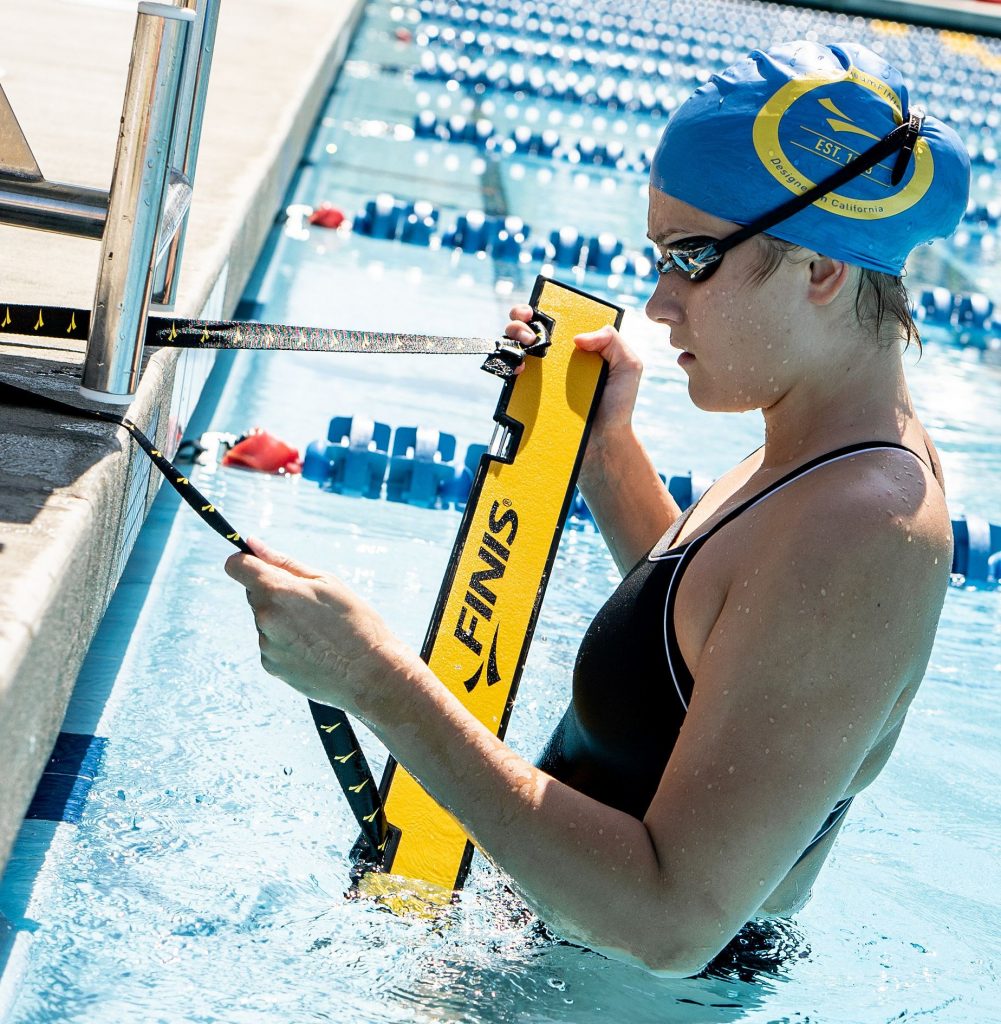Welcome Back to Part III of our blog series on Backstroke Starts! This week, we plan to dive deeper into the famous Backstroke Wedge and how/when you should start promoting and using this with your swimmers.
In case you missed Part I and Part II of our blog series, click here. I would highly recommend catching up with us, as we discussed the BEST Backstroke Starting Techniques in Part I and Different, EFFECTIVE Backstroke Start Drills in Part II!
Let’s get started!
The Backstroke Wedge came out in 2013 and honestly changed the world of Backstroke Starts. Not only could a swimmer NOW push the wall at a more multi-directional angle (versus, just backwards), they help swimmers avoid SLIPPING on walls that don’t have touch pads.
If you’ve ever slipped off the wall, it can be extremely detrimental to your race. Not saying you can’t make up for it, but you probably won’t win. Elizabeth Beisel gave it a run for her money back at 2014 Nationals and mad props to her, but if you’re at Olympic Trials and you slip – that dream is over. Oooooof – back to brighter things…
Different Styles of Backstroke Wedges
The Backstroke Wedge is an exciting tool and requires the proper setup from swimmers. Each wedge can be a little different, as there are a few more on the market now – under different price points. Here’s an example of a few different styles of Backstroke Wedges
1.) Retractable Wedges:

This wedge type is the one you’d use at a major competition. Colorado Timing system sells them for close to $800 a pair and the great part about these is they automatically retract AFTER a swimmer dives in to avoid having the timers bend down and pull the wedge out.
2.) Manual Wedges:

Manual wedges require a bit more work from the timers and officials, but come at a way lower price point. I’ve found some as low as $95/each. These are the wedges we actually have at my club team, so our swimmers can practice their wedge setups!
Proper Backstroke Wedge Setup for Your Swimmers:
1.) Find Your Depth
No matter if you’re using a Manual Wedge or a Retractable Wedge, you want your swimmers to find a depth of the wedge which feels good to them. For the most part it’s a good, general rule to have them put the wedge right at the water line. Some wedges allow for movement (vertically) up to 8cm – 4cm below the water line and 4cm above – but, I’ve found that most swimmers have success with their Backstroke Starts, if they start with their feet up HIGHER on the wall – keeping the wedge in line with the water’s surface.
2.) Foot Position
There is a rule that swimmers MUST keep their toes on the touchpad or wall, even while using the wedge. You cannot have your toes up over the gutter or your toes on the wedge itself – see the picture below:
3.) Knee/Hip Bend
When setting up for a Backstroke Start, you want to see an extreme amount of knee bend and a tight hip angle on the wall. A Backstroke Wedge is angled at 10-degrees and that extra angle allows swimmers to push UP more than they’re used to – so make sure when you setup, you see some sharper angles. See picture below:
Still Struggling to Find Your Proper Backstroke Wedge Depth?

Video Analysis is a great tool to see underwater what your body looks like when you setup for a Backstroke Start. We offer an abundance of different video analysis packages here at Swim Like A. Fish, if you’d like to work with one of our many skilled coaches – click here. A video analysis for something like this would require the intermediate package.
In general though, you want a swimmers setup to be in a position where they can QUICKLY extend the legs and back to achieve that nice rainbow arch. Unlike flipturns and starts, you are NOT just extending the legs and going into a standing position – a Backstroke Start requires a HUGE back arch and firing from the back fascial line. It’s similar to a deadlift, kettle swing, or superman exercise in dryland.
What if I don’t have a Wedge?
As I said before there’s some pretty economical Backstroke Wedges out there available, like as I mentioned before the ones we use at my club team. If that’s still not in your budget, you could have your swimmers bring their toes up and above the gutter (if it’s a low gutter system at your pool) to get them used to pushing up and back at the same time. While I am aware this is illegal to do while racing, it’s a helpful drill to get swimmers to understand the multi-directional push wedges require.
The Sequence of a Backstroke Start:
In conclusion, the sequence of a Backstroke Start involves the setup, the take your mark position, the push from the legs, the arm and head throw, the streamline and lock, and finally, the kick of the feet up to complete that rainbow. That’s 7 steps needed in the proper order to technically achieve a great Backstroke Start. Who knew Backstroke Starts could be so complicated? That’s why SLAF exists – to break down swimming into those more finite details and highlight that it’s never as easy as it seems.
Happy Training!
Abbie Fish

2 Responses
Excellent 100
Thanks so much!